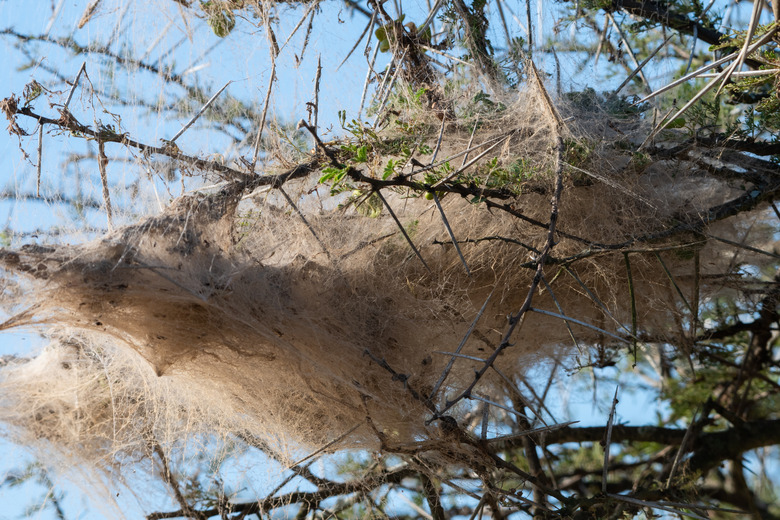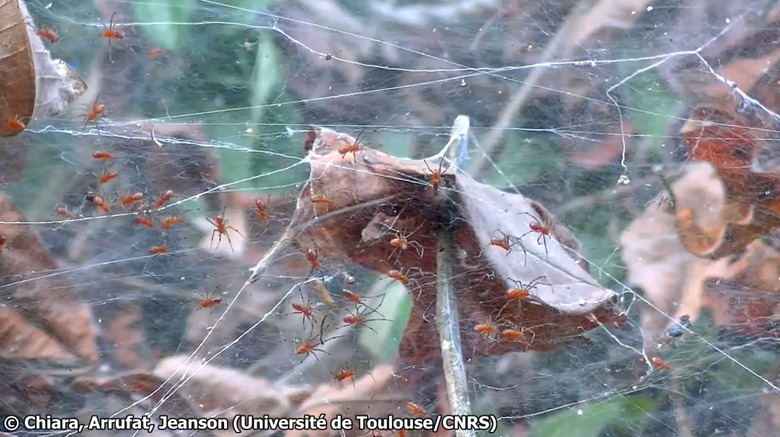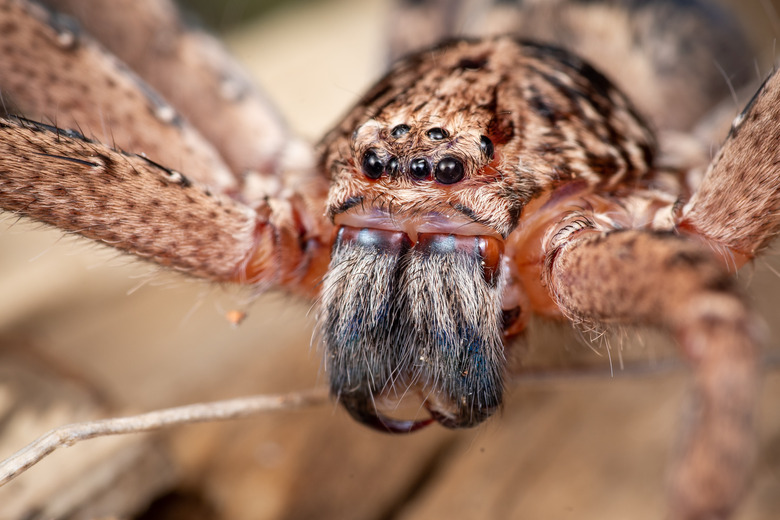Video Showing Spiders Hunting In Packs Is Pure Nightmare Fuel
Scientists have discovered a terrifying species of spiders that hunt in packs. Most adult spiders prefer to live their lives alone, like the Joro spiders spreading across the southeastern U.S. However, the tiny red members of the species Anelosimus eximius live their lives in colonies of hundreds.
The spiders are smaller than a pencil eraser, but together they can build massive webs that span several meters in size. What's most intriguing about these spiders, though, is the way they hunt.
These spiders hunt in packs by using vibrations
Normally when you see animals hunting in packs, there's usually a leader somewhere. This lead calls the shots, somehow commanding the members of its pack to do their different parts. That isn't the case with these spiders, though. In fact, there is no leader coaxing these massive colonies forward. Instead, the spiders hunt using vibrations in their web.
A new study published in Proceedings of the National Academy of Sciences details this species' peculiar hunting routine. The spiders weave massive nonstick webs and then wait for bugs to run into them. When they feel the vibrations in the web, the spiders hunt in packs moving towards the bug in synchronized motion. They stop whenever their own movements threaten to drown that of their prey, resulting in weird stop-animation-like movements.
This spider hunting technique is extremely effective
This creepy crawly cohort moves toward its prey in stop motion: The spiders pause, then rush forward in unison, then pause again. https://t.co/nBvNsiECCB pic.twitter.com/PXqbj0z9Ao
— News from Science (@NewsfromScience) March 7, 2022
It's a terrifying sight to watch as the colony move towards its prey in stop motion. The authors of the study were able to capture footage of it, too, by sending vibrations through a web using a miniature motor. Anytime the vibrations began, the spiders would surge towards it, descending on it quickly.
The full video can be seen in the study, which is published online with full access for all. If you just want a quick look, though, the tweet included above shows a quick GIF of how the spiders move together. The way these spiders hunt in packs is extremely effective. Because so many spiders are moving towards the prey it has less chance to escape.
These spiders also live in groups
While the tiny red spiders that make up Anelosimus eximius prefer large colonies, they aren't the only spiders that live in groups. Evidence of spiders living thousands of years ago has been found. And, with other 40,000 different species of spiders in the world, it makes sense that other spiders like to hunt in packs.
One species, the Agelena consociata resides in the Congo. This spider family prefers to live in colonies of as many as 1500. The species builds massive communal webs that allow them to capture and share their food. Some funnel-web spiders have also been known to create colonies and hunt in packs.
Another species you might not expect to see working together is the Delena cancerides. This type of huntsman spider is found in Australia and New Zealand and is extremely social. These spiders often live in groups of up to 300. Like the tiny red members of the Anelosimus eximius, these spiders hunt in packs. However, they don't use webs to catch their prey. Instead, they run along the ground, trees, and other terrains to catch their prey.


